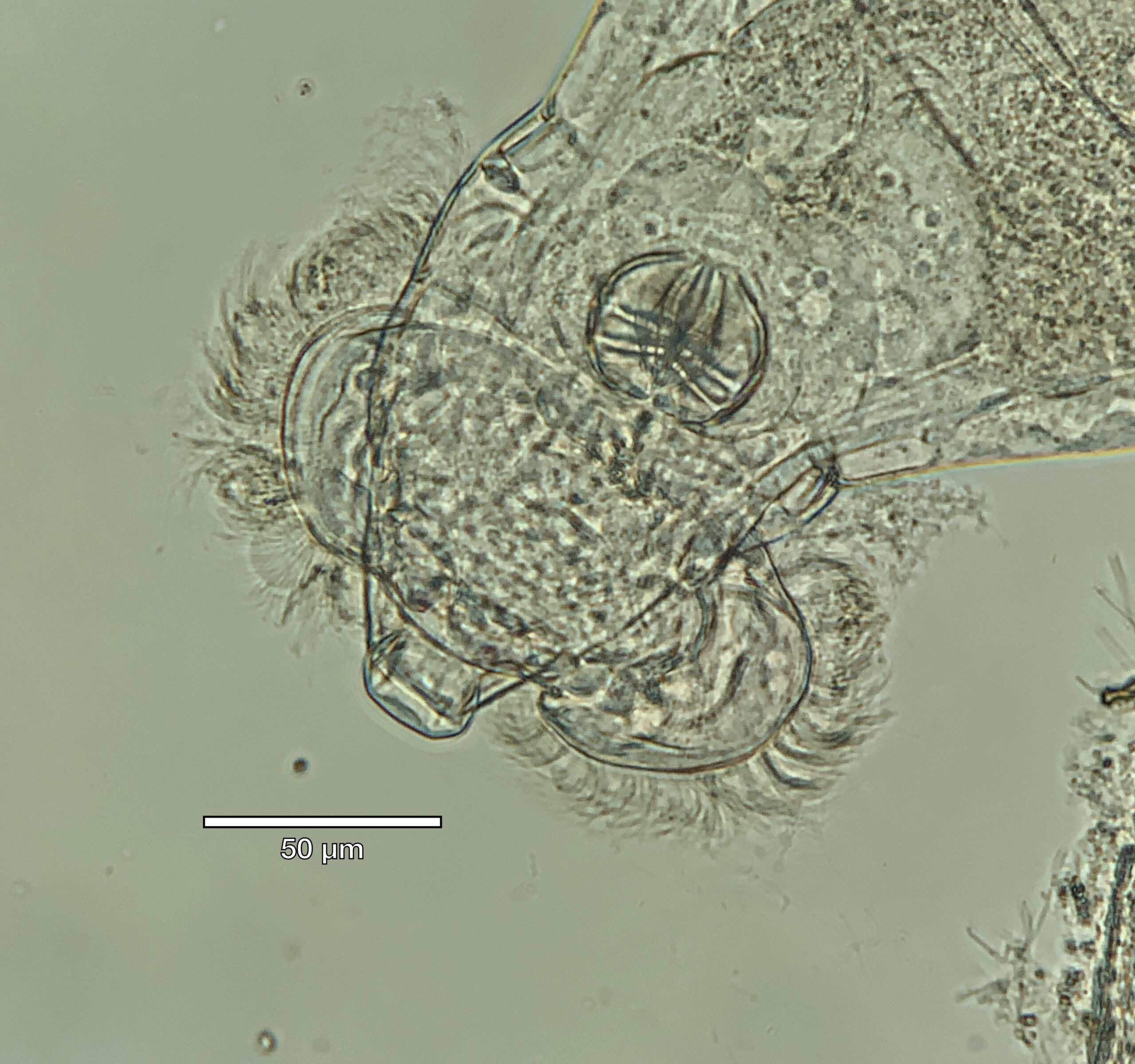The Secret Life of Bugs:
Gastrotrich
The Mastax of Disguise
by Natalie Walton, Aquafix Microscopist
Due to their pronged tail and general shape, gastrotrichs can be commonly mistaken for a type of rotifer. While this case of mistaken identity is completely understandable I’m here to help you from making that mistake. But first, let’s get to know these lovely creatures a bit better.
Rotifers come in many shapes and sizes. In fact, there are at least 1,500 different species that have already been identified. However, despite their differences, the species of rotifer found in wastewater all share a distinctive trait known as a mastax. This organ is visible in the gut of a rotifer and serves the purpose of grinding up their meals for digestion. Amazingly, the mastax is also the only part of a rotifer that has been found fossilized. (Mastax photo here)

While not as fascinating as a mastax, rotifers also have a pronged tail. This tail is often what leads to a gastrotrich being labeled as a rotifer. While their tails may look similar, there is a difference in how they are used. Rotifers contract their tail into their body and then extend it again, causing them to move in a telescopic-like manner. However, gastrotrichs cannot contract into themselves and thus move in a quick, albeit smooth glide. Speaking of gastrotrichs, not a lot is currently known about them because they need to be slowed down in order to properly study. While cocaine was used to do this in the past, this method is no longer feasible. So, until scientists discover a better way they will remain somewhat of a mystery to us.
Now that we have become a bit better acquainted with our new metazoan friends have you decided which one you’d rather have in your wastewater plant? Or do you think they are equally neat, and you can’t decide? Well, it does not matter which is in your system, both can be indicative of a healthy microbial sludge age. I will note though, that determining the approximate microbial sludge age with these organisms alone will only give you a very broad range. To better narrow it down there are many other factors that also need to be considered, such as floc characteristics, filamentous bacteria, and bulk liquid quality. So, in short, differentiating the two is not vital to running a well-functioning wastewater plant but it will impress your boss and coworkers by making you seem smarter. That being said here is a quick recap of what to keep in mind when trying to tell the two apart.
- Look for a mastax. Is one present? If so, then you have a rotifer.
- Is it “hairy” all over? If so, you’ve got a gastrotrich.
- How does it move? Rotifers move in a telescopic motion while gastrotrichs move smoothly, and often quickly glide.
- Still stuck? Take a photo and email us at info@teamaquafix.com.
Thanks for reading and stay tuned for the next edition of Secret Life of Bugs.
Want to learn even more about rotifers and gastrotrichs? Then check them out on our online microorganism database at https://teamaquafix.com/identifying-wastewater-microorganisms/

About the Author
Natalie Walton joined Aquafix in 2019 and focuses on performing microscopic analysis for customer samples, as well as conducting experiments on innovation in grease removal. She was also a key contributor to creating our Microorganisms Database supplying identification tips and research.
